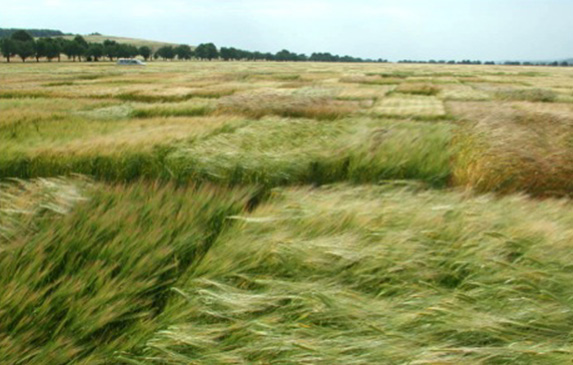Improving the environmental adaptation of barley to extend it’s production area
The photoreceptor HvPHYTOCHROME C is a new target for modification of the circadian clock and photoperiodic flowering in barley.
To meet the world’s growing demand for food, crops need to be adapted to new agricultural areas. This can be achieved through breeding crops with altered timing of reproductive development.
Barley (Hordeum vulgare L.) requires long days to flower, but day-neutral flowering represents a potential fitness advantage in stress-prone environments with short seasons. For breeding of crops with optimized life cycle, a detailed understanding of flowering time genetic networks and natural diversity of their individual components is crucial. Recent advances in deciphering the complex genomes of temperate crops such as barley and wheat provide unprecedented resources for gene identification and characterization.
In a recent study, we identified a gene mutation in the barley red-light photoreceptor PHYTOCHROME C (HvPHYC) underlying early flowering under long and short day conditions (Pankin et al., 2014). This mutation associates with the disruption of the circadian clock, the internal timekeeping mechanism in plant and animal species. Further results show that the gene might be important to control light input into the circadian clock and downstream photoperiod response pathways.
What about the adaptation? Have breeders “by chance” already selected for this mutation? Intriguingly, the mutated allele accelerating flowering was enriched in Japanese cultivars as revealed by the diversity analysis.
Within the CEPLAS, we carry on with the identification and characterization of genes controlling important agronomic traits such as tillering and flowering. We are using broad panels of wild and cultivated barley genotypes and its wild Hordeum relatives to understand how the diversity of flowering and tillering genes contributes to the variety of barley life forms. This will provide useful knowledge to both plant developmental biologists studying fundamental mechanisms and breeders aiming at higher yield.
Contribution by Agatha Walla and Artem Pankin , Heinrich Heine University/Max Planck institute for Plant Breeding Research
Planter’s Punch
Under the heading Planter’s Punch we present each month one special aspect of the CEPLAS research programme. All contributions are prepared by our young researchers.
Corresponding publication
Pankin A, Campoli C, Dong X, Kilian B, Sharma R, Himmelbach A, Saini R, Davis SJ, Stein N, Schneeberger K, & von Korff M (2014) Mapping-by-Sequencing Identifies HvPHYTOCHROME C as a Candidate Gene for the early maturity 5 Locus Modulating the Circadian Clock and Photoperiodic Flowering in Barley. Genetics. [Abstract]
